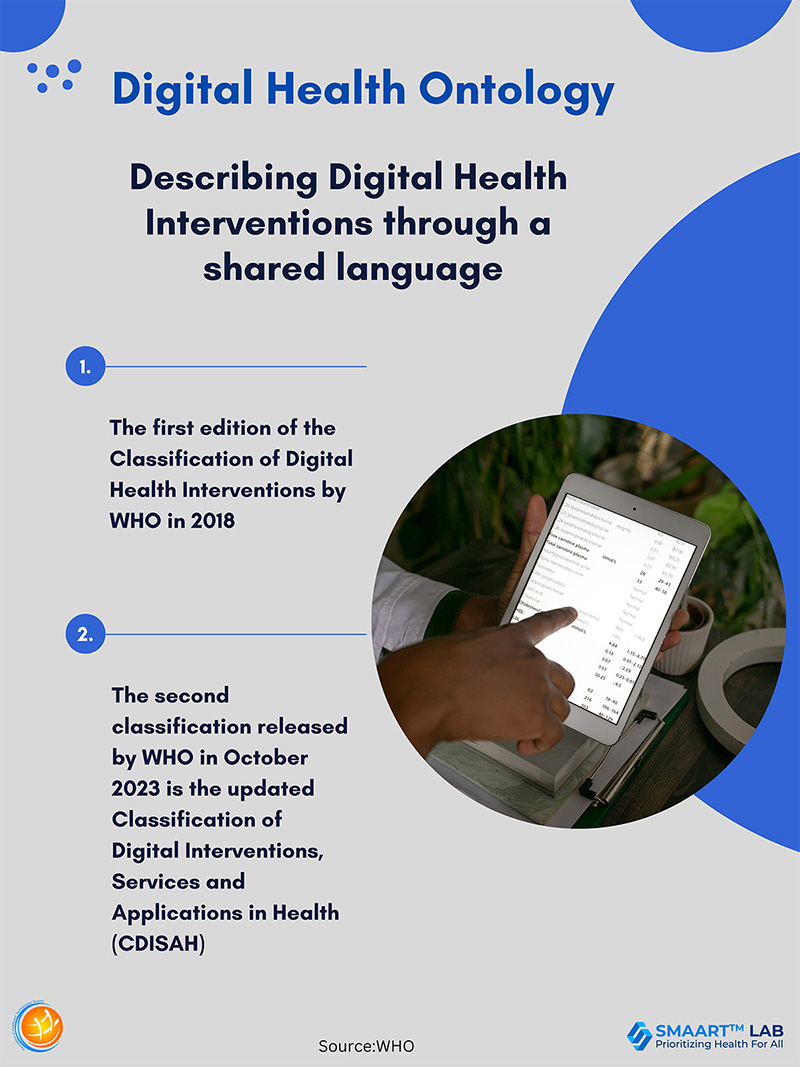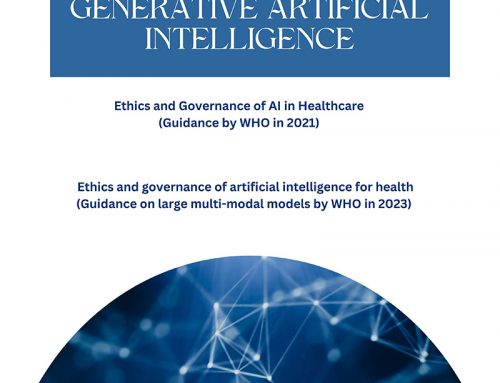With rapidly advancing technology, recent development in communication systems, emergence of big data, the pace of innovation in digital health is rapidly expanding. Digital health uses the systematic application of data generated with amalgamation of ICTs with computer sciences where it offers discrete capability to achieve health objectives through various digital health interventions for achieving good health and well-being of all by Informed decision making.
The first edition of the Classification of Digital Health Interventions by WHO in 2018, offers the categorization of digital and mobile health technologies to support health system needs.
Based on the primary target user, the categorization is based on four overarching grouping:
- Interventions for Clients
- Interventions for Healthcare Providers
- Interventions for Health system or resource manager
- Intervention for Data services
Digital Health involves wide sectors working in silos or together but lacking a shared language. The need of a mutually agreed, shared and standardized vocabulary has come up to identify the gaps, duplication, assess the effectiveness, efficiency, and facilitate the implementation alignment of various digital health interventions. It offers a simplified language for dialogue between public health practitioners and technology oriented groups.
The classification of Digital Health Interventions is aligned with other classifications such as Health System Challenges (HSC) etc. e.g., Insufficient supply of commodities, Healthcare provider’s poor adherence to clinical guidelines, Lack of access to information or data, Loss to follow-up of clients and also fits into various system categories such as Logistics Management Information Systems (LMIS) or Electronic Medical Records (EMR). Telemedicine systems, Decision support systems, Health Management Information System (HMIS), Identification registries and directories and Client communication system.
The second classification released by WHO in October 2023 is the updated Classification of Digital Interventions, Services and Applications in Health (CDISAH). It is a set of categorization wherein the personal and health system challenges and needs are addressed by embedding digital health interventions (DHIs) into digital applications and services.
In the new classification, the following has been updated:
- The system categories is now called more precisely as Digital Services and Application types including 5 representations Point of service » Health System/ Provider administration » Registries and Directories » Data Management services » Surveillance and Response
- Client has been referred as person or individual
- With numerous policies and models for health care delivery, updated language for ensuring DHI has been added to ensure it is inclusive of healthcare system
- Addition of new DHIs reflecting the evolution of development and its capability to address global threats and emerging pandemics.
Source: WHO
- https://iris.who.int/bitstream/handle/10665/373581/9789240081949-eng.pdf?sequence=1
- https://iris.who.int/bitstream/handle/10665/260480/WHO-RHR-18.06-eng.pdf?sequence=1







Leave A Comment